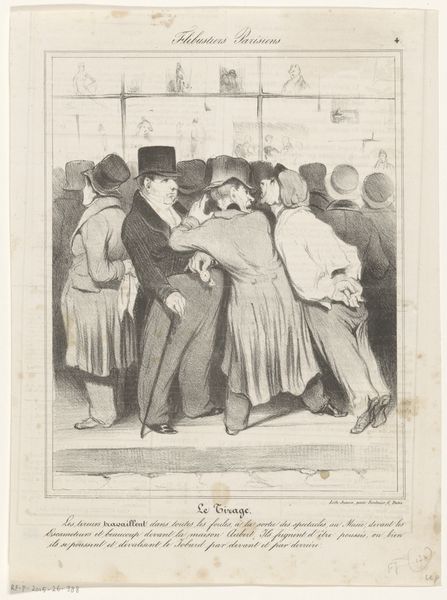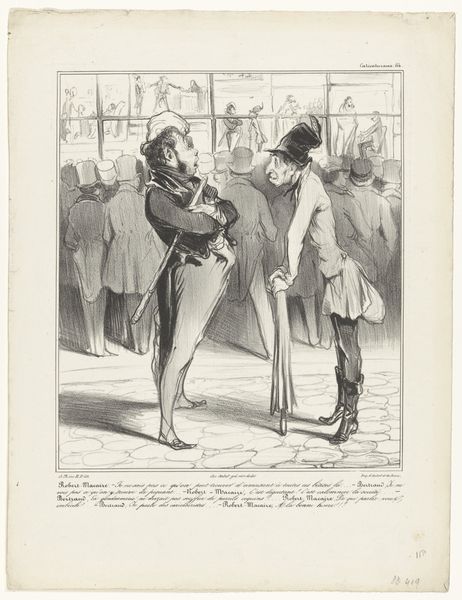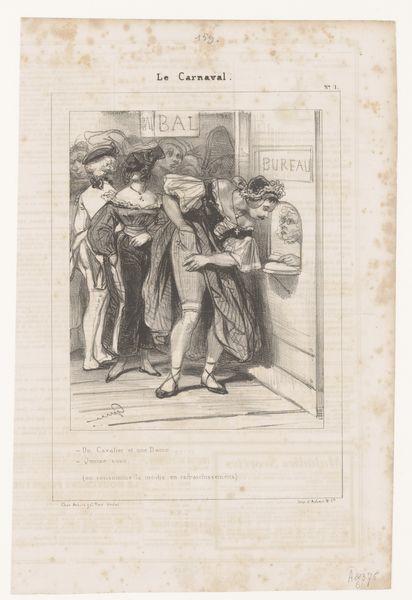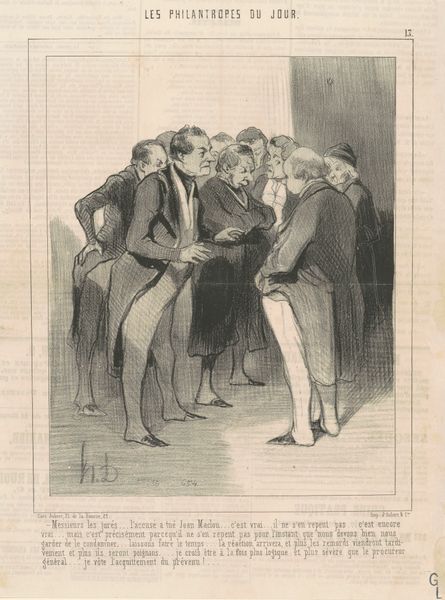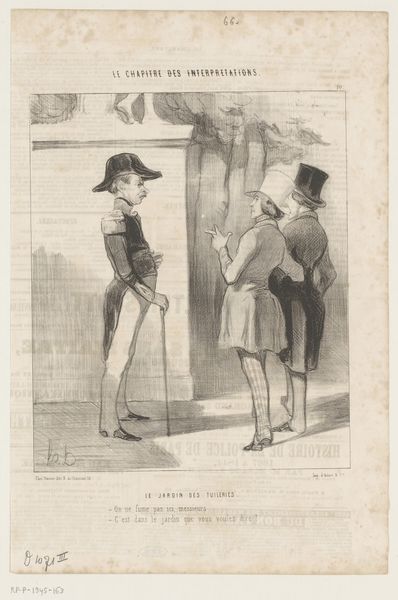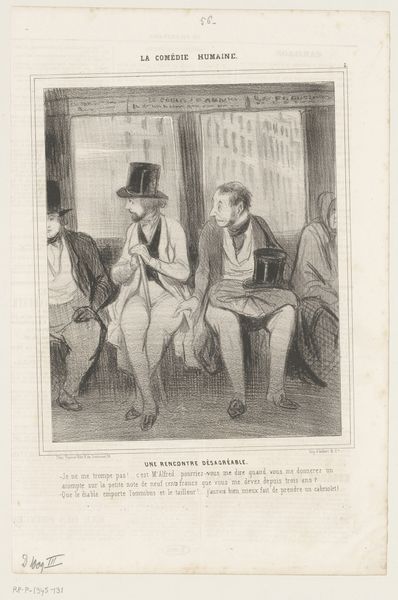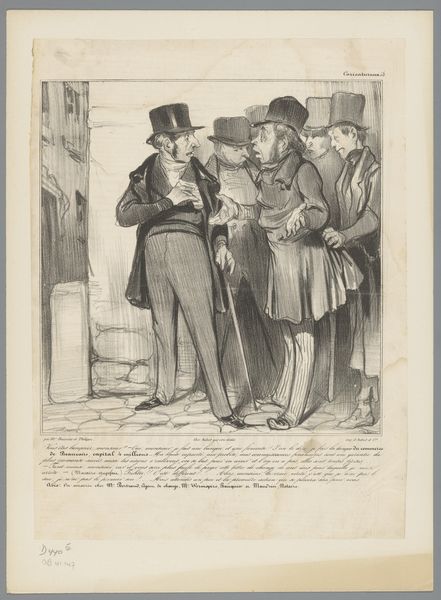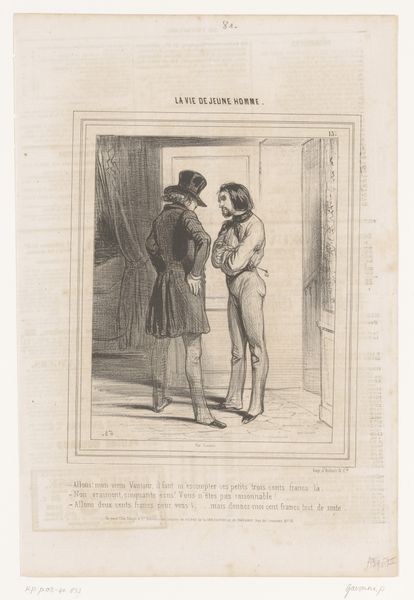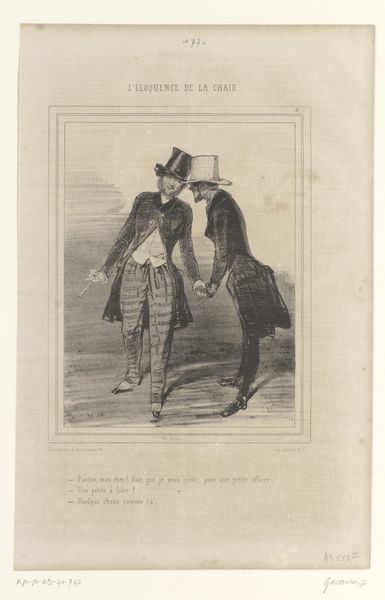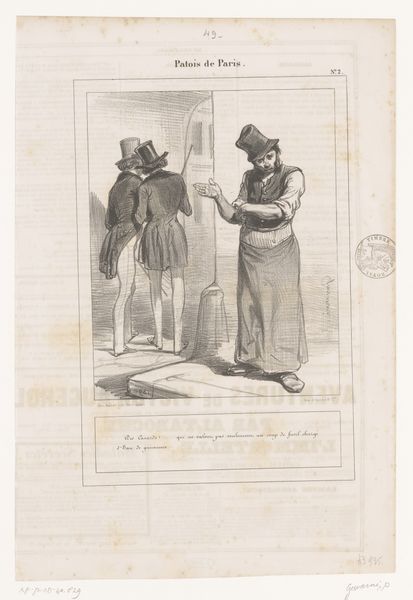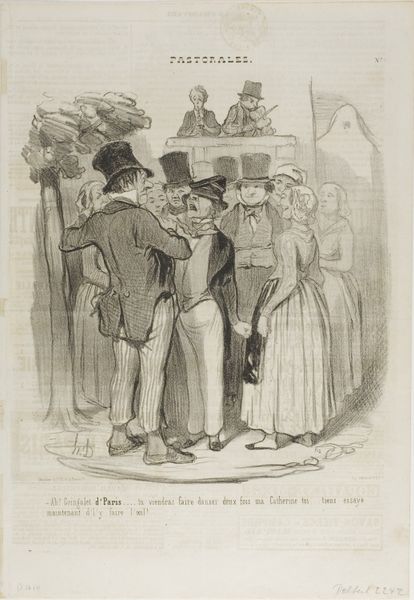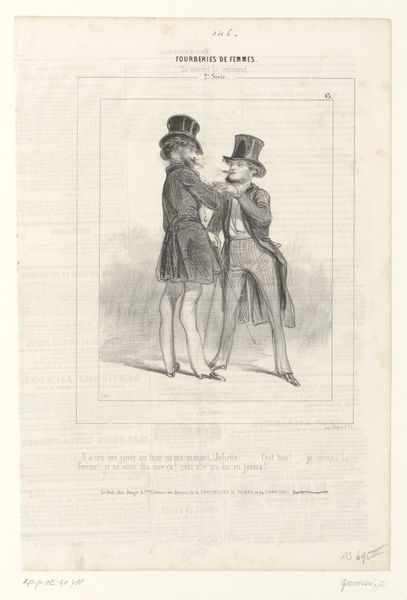
drawing, lithograph, print, engraving
#
drawing
#
16_19th-century
#
lithograph
# print
#
caricature
#
old engraving style
#
romanticism
#
cityscape
#
genre-painting
#
engraving
Dimensions: height 364 mm, width 240 mm
Copyright: Rijks Museum: Open Domain
This print was made by Charles-Joseph Traviès, likely in the 1830s, using lithography, a relatively new technique at the time. With lithography, the artist draws on a flat stone with a greasy crayon, then the stone is treated so that ink adheres only to the drawn areas. The beauty of lithography is that it enables the relatively easy reproduction of images for mass consumption. The hatching and cross-hatching that define the forms in this street scene suggest that Traviès was highly skilled in the process. The effect is almost photographic, capturing a moment of social tension. We see a would-be pickpocket caught in the act, illustrating a common anxiety in an era of rapidly expanding capitalism. Prints like these offered a sharp commentary on the changing social landscape and the often precarious nature of urban life for both the perpetrator and the potential victim. The very act of making and selling such prints was, of course, part of that same landscape.
Comments
No comments
Be the first to comment and join the conversation on the ultimate creative platform.
